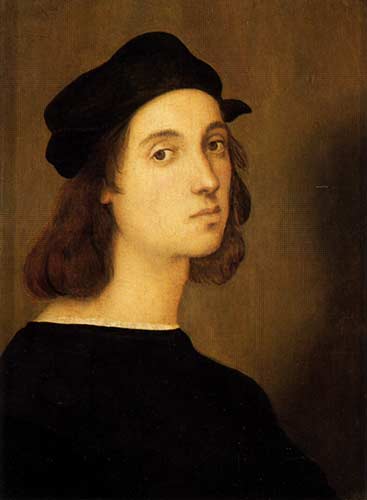When the Renaissance painter and assiduous chronicler of artists’ lives, Giorgio Vasari, sat down to write his biography of Raphael, he could hardly contain his enthusiasm: “How bountiful and benign Heaven sometimes shows itself in showering upon one single person the infiniute riches of its treasures, and all those graces and rarest gifts that it is wont to distribute among many individuals, over a long space of time, could be seen in the no less excellent than gracious Raffaello Sanzio da Urbino, who was endowed by nature with all that modesty and goodness which are seen at times in those who, beyond all other men, have added to their natural sweetness and gentleness the beautiful adornment of courtesy and grace, by reason of which they always show themselves agreeable and pleasant to every sort of person and in all their actions.”
Vasari was writing in the middle years of the sixteenth century, several decades after the precocious Raphael’s premature and universally mourned death, at the age of 37, in 1520. Vasari saw Raphael not only as one of the greatest artists ever to have lived – perhaps, in his view, the greatest of all, even including Michelangelo – but as the role model for every aspiring artist of the future. He was not only the perfect painter but the perfect courtier, who in his seemingly effortless ascent to pre-eminence had done more than any other man to correct the age-old prejudice that artists were generally mad, bad and dangerous to know (a prejudice which went back to antiquity, the Greek author Plato having excluded artists from his ideal republic on the grounds of their mental instability). As Vasari breathlessly expressed it: “since the greater part of the craftsmen who had lived up to that time had received from nature...


